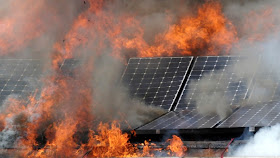Lead-containing telluride has been the main material in thermoelectric system for waste-heat recovery. Despite its strong thermoelectric properties, lead telluride can't be used commercially due to health risks associated with lead.
That has sparked
the rush for a similar, but safer compound.
Physicists at the University of Houston’s (UH's) physics department
and the Texas Center for Superconductivity are working on an innovation that
could boost vehicle mileage by 5%
and power plant and industrial processing performance as much as 10%, using new non-toxic material - tin telluride.
Telluride has
been studied for years, said Zhifeng Ren, M.D. Anderson Chair professor of
physics at UH. Without lead,
there is a much better chance for the system to be commercialized.
The research shows
the potential for building a device that can capture waste heat – from vehicle
tailpipes, industrial smokestacks, power plants and other sources – and convert
it to electricity to boost productivity.
In order to improve the thermoelectric property, the team added indium into tin telluride to increase its conducting properties.
In one example,
the device could capture heat from a car’s tailpipe and convert it to power the
car’s electronics, improving the car’s mileage by about 5%, Ren said. “Even 1%,
every day, would be huge,” he said, considering how much crude oil is consumed
worldwide.
In 2012, U.S.A and China consumed 18.6
million barrels and 10.3 million barrels of crude oil, respectively, everyday. In ExxonMobil annual energy
forecast for the next 30 years, the global energy demand will increase 35% by 2040.
The surge in
demand makes even a small gain in efficiency valuable, Ren said, although he
also said the process could be made more efficient in the future.
Source:
http://m.uh.edu/news-events/stories/2013/september/0905zhifengren.php













